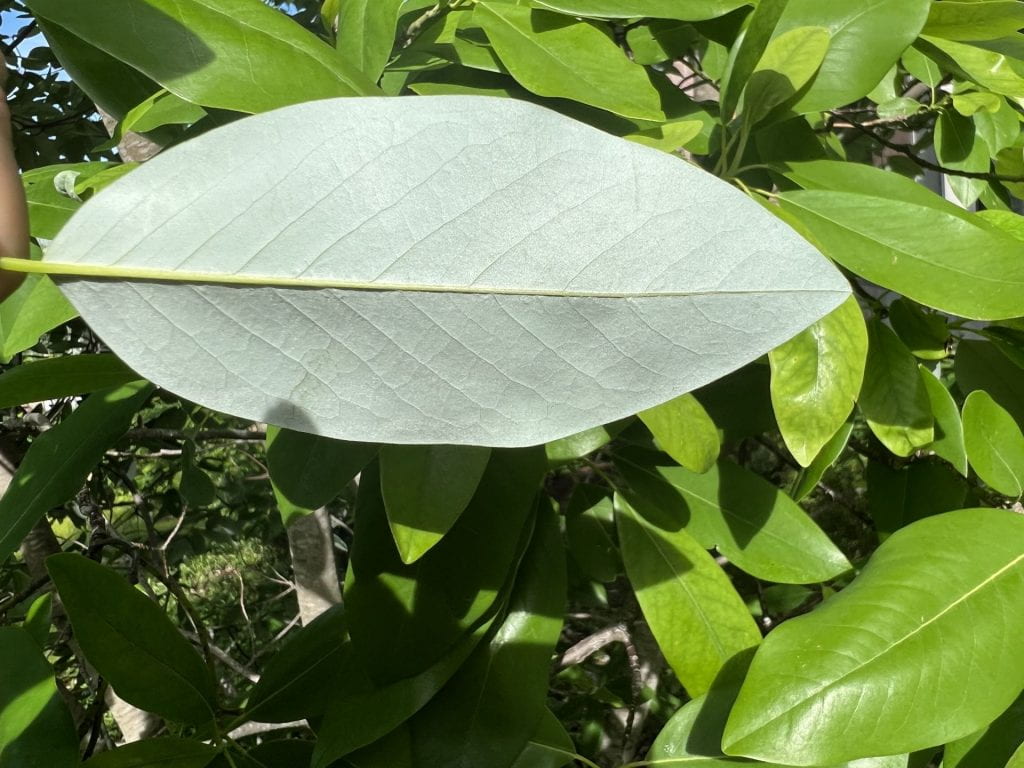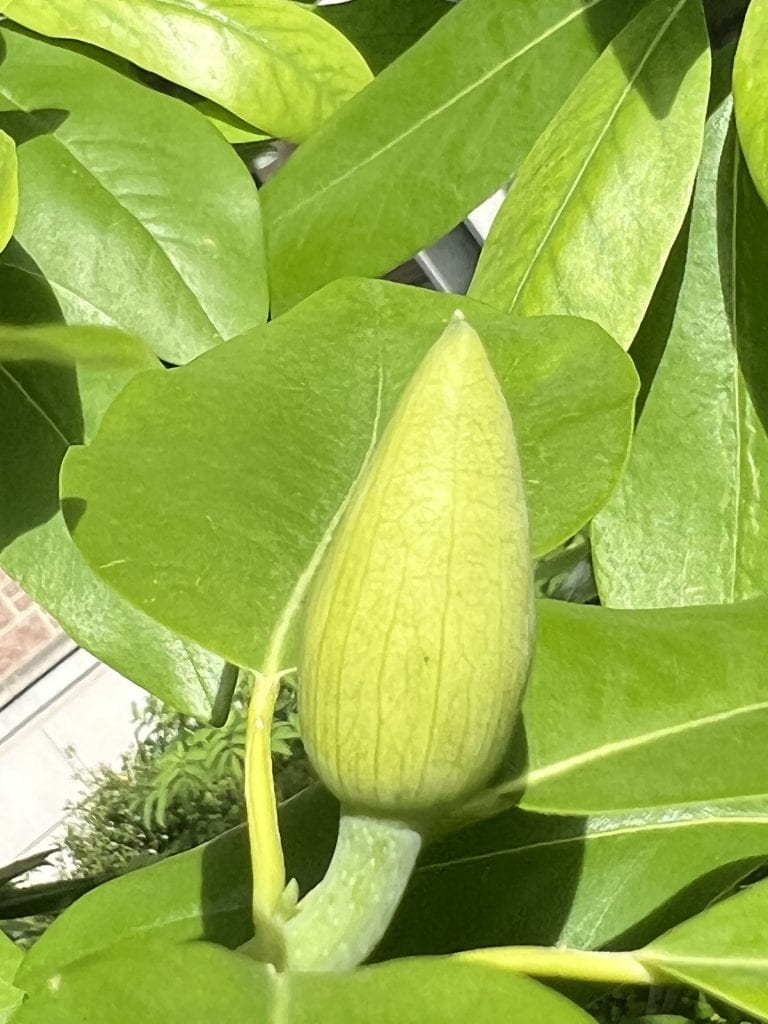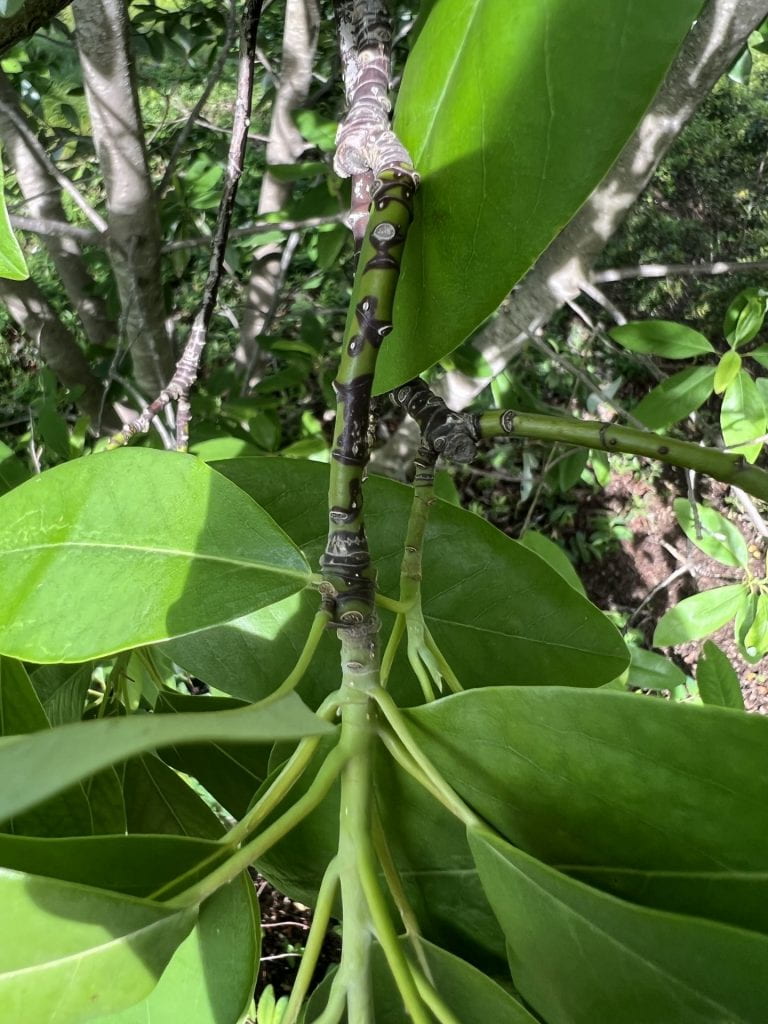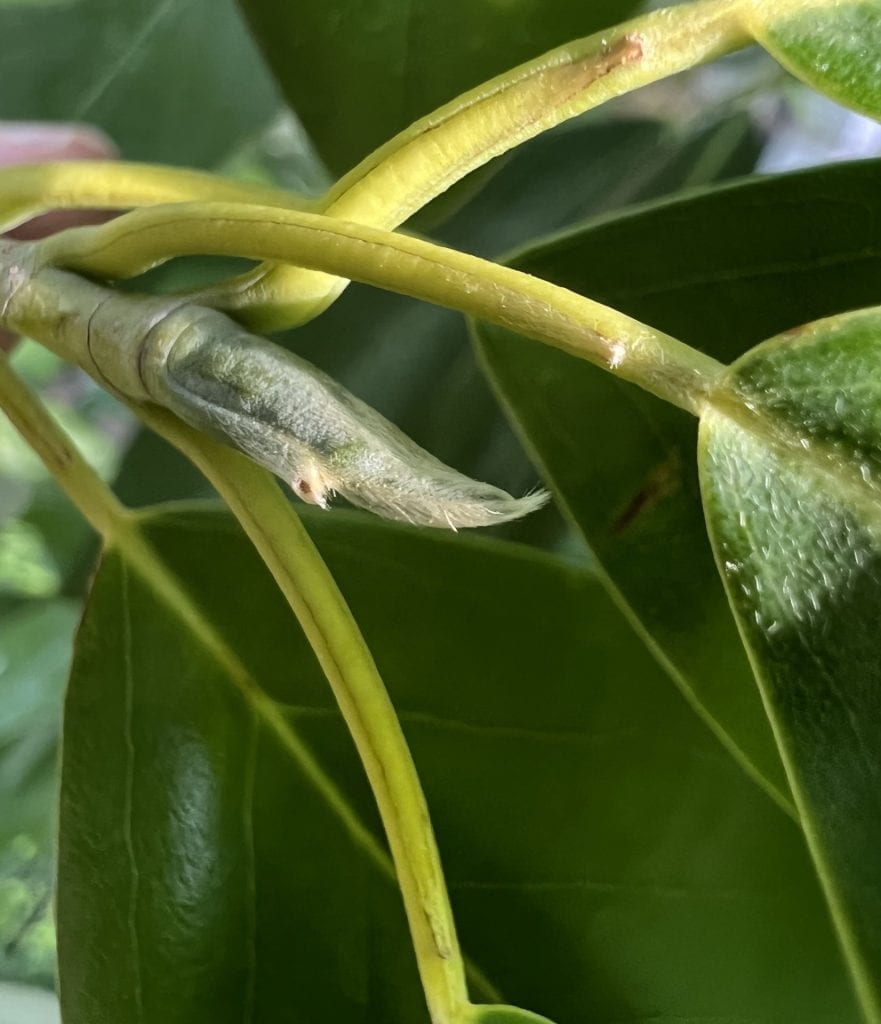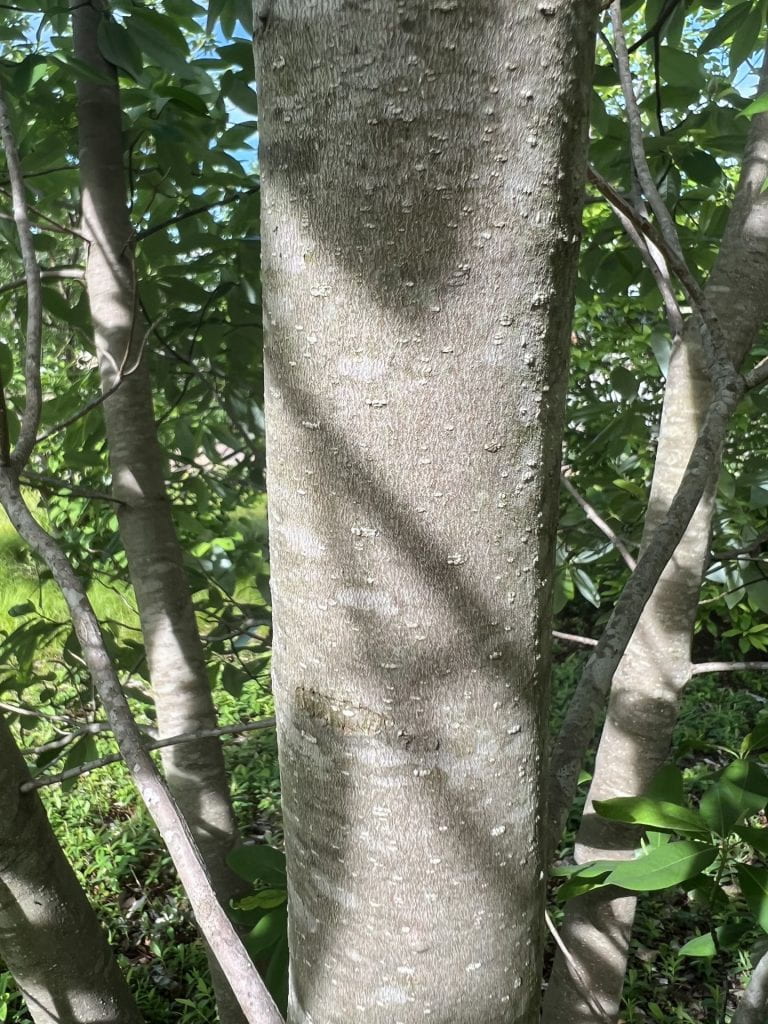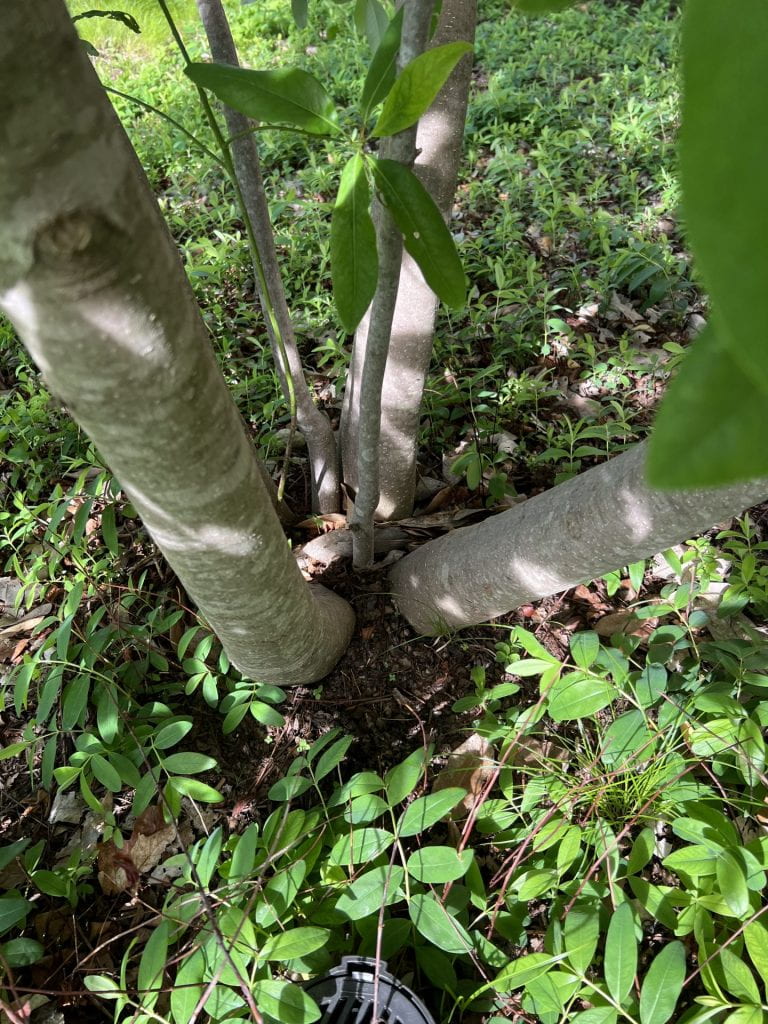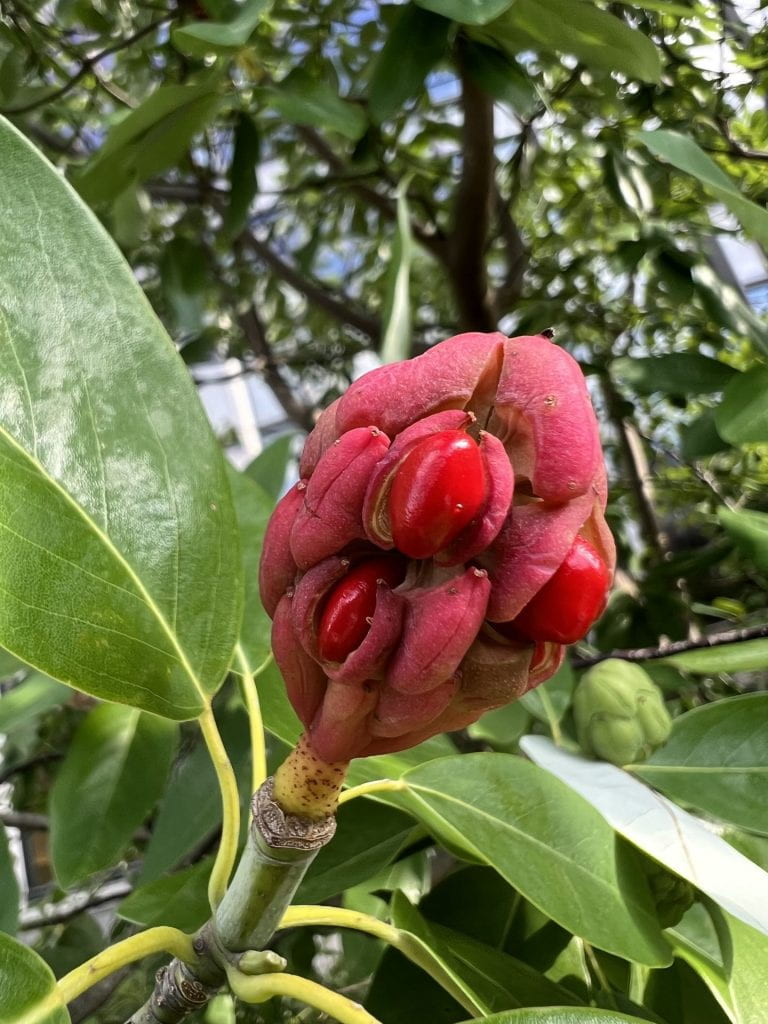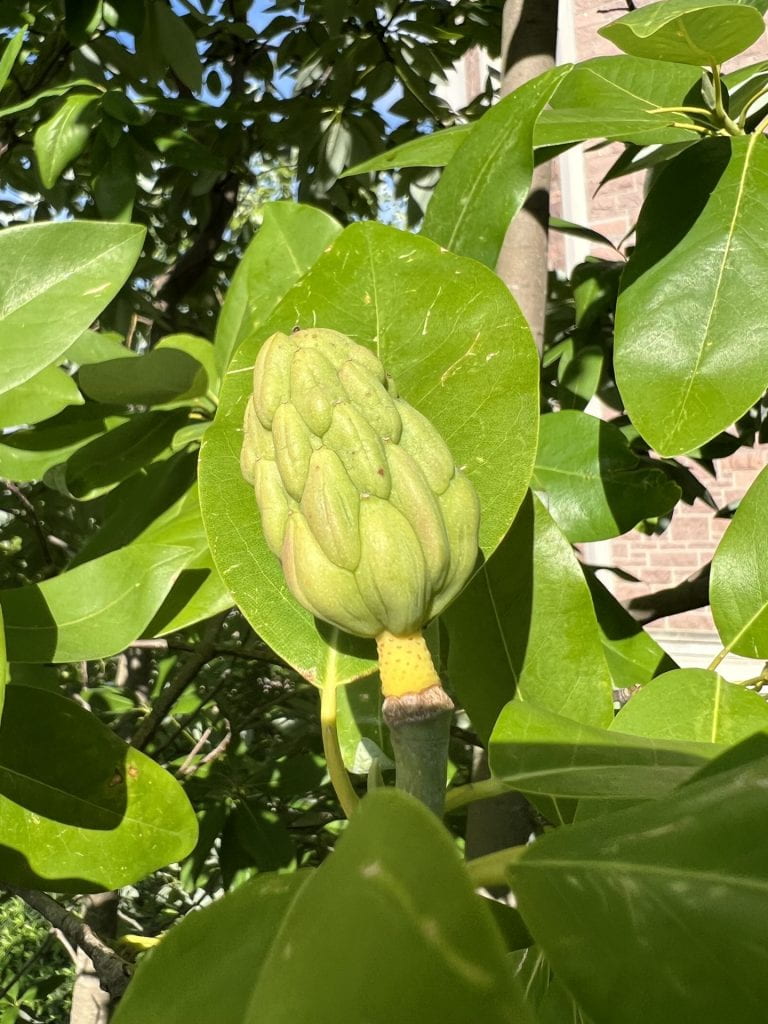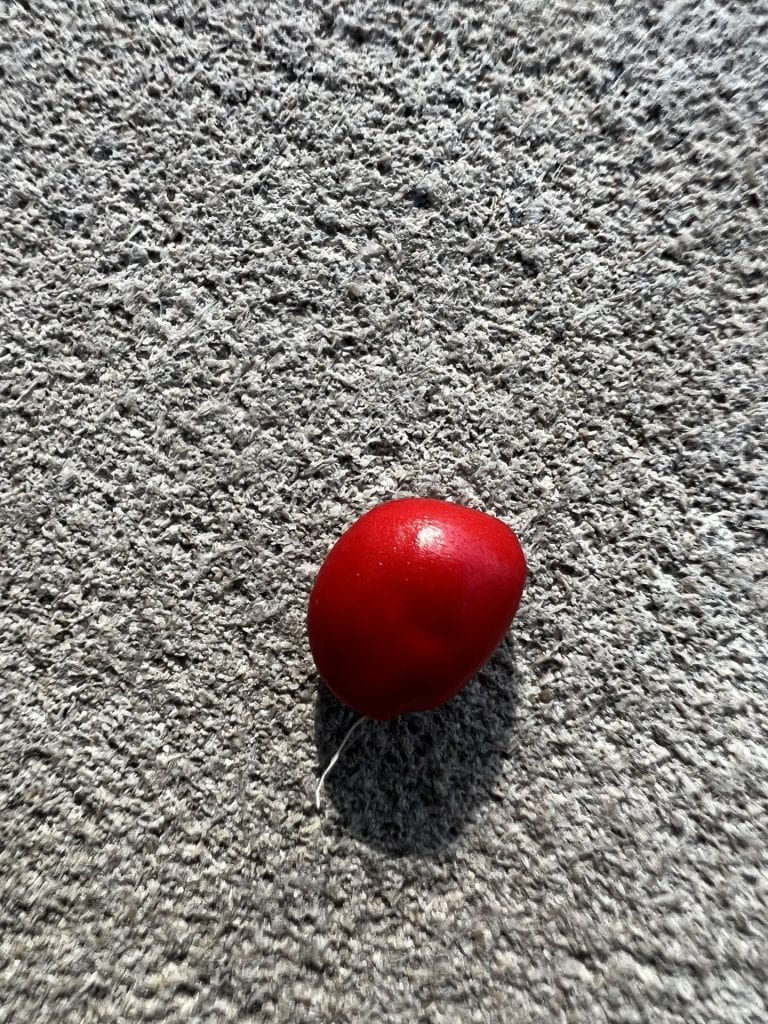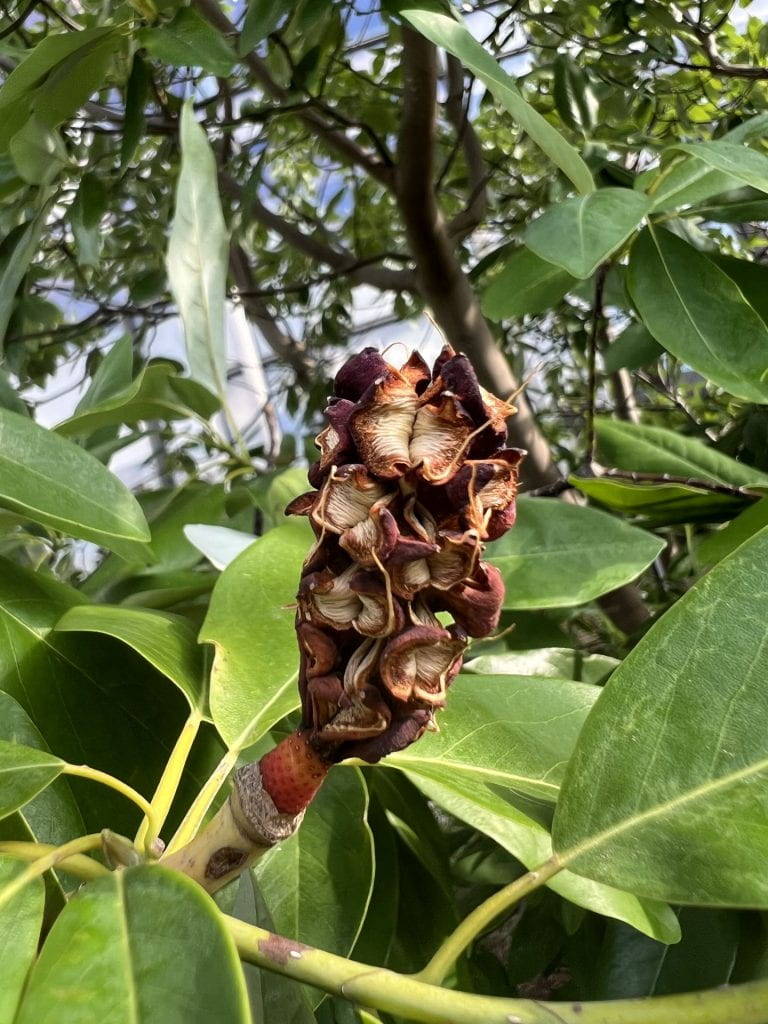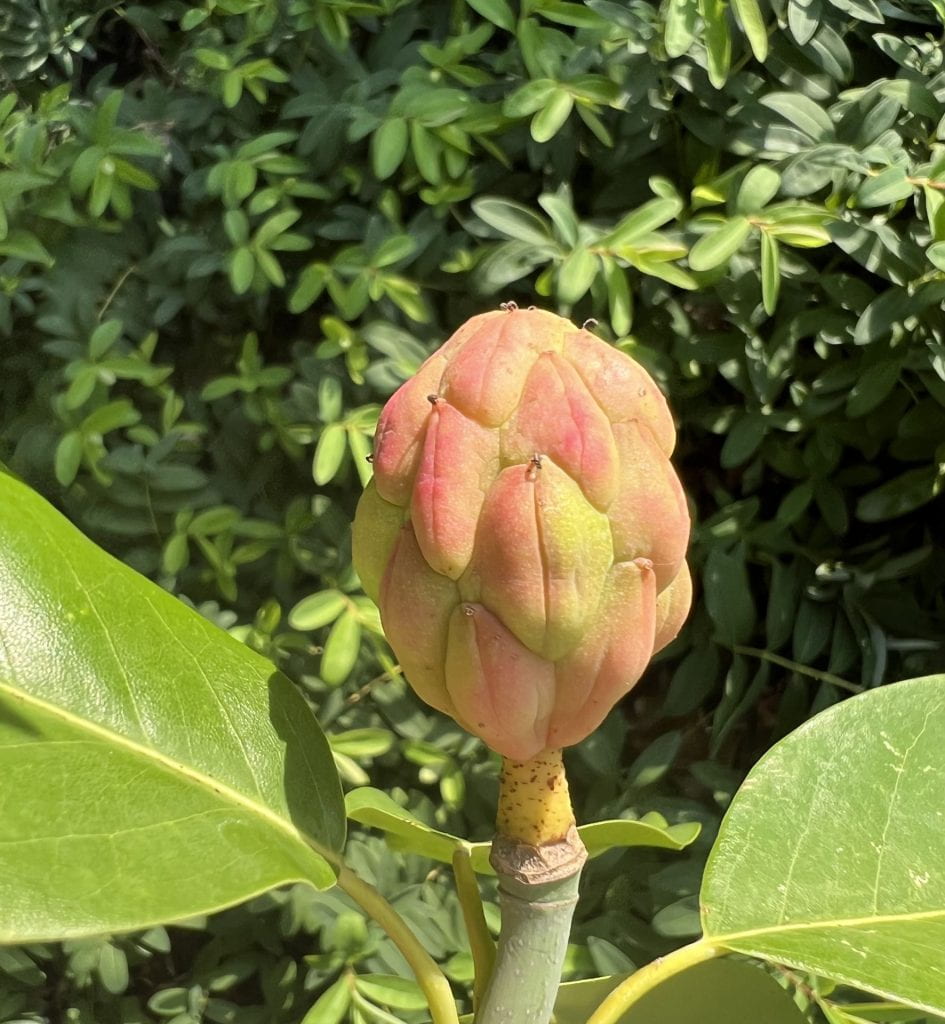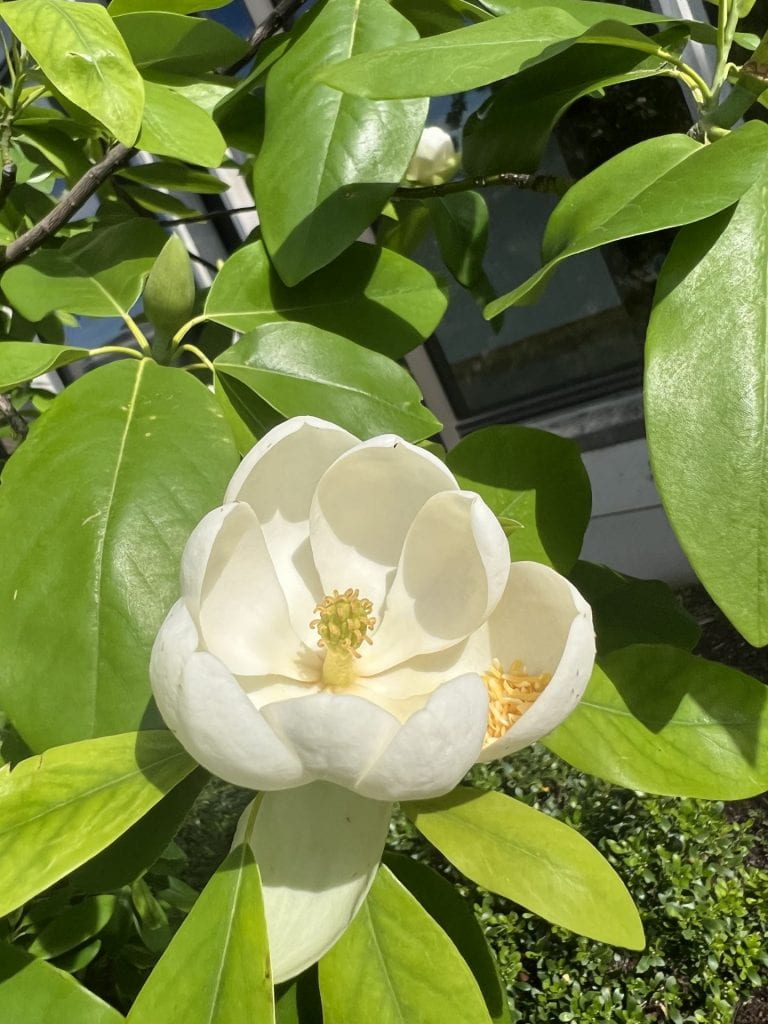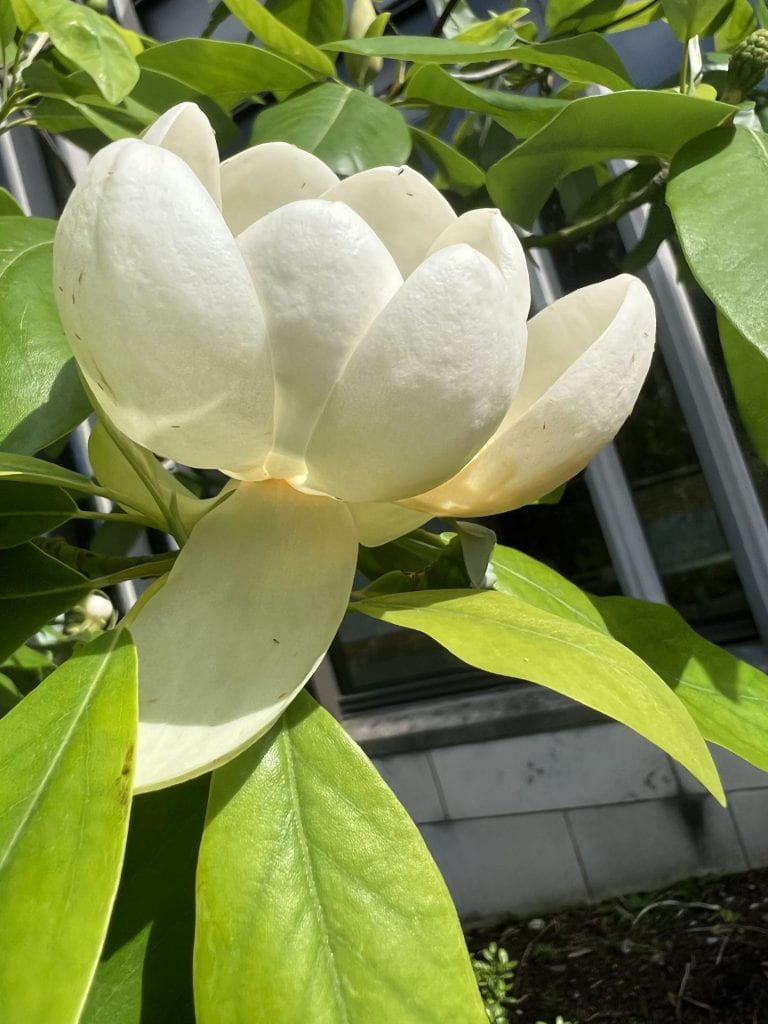Leaf Identification
The leaves of the Sweetbay Magnolia are simple (no leaflets), alternately arranged on the stem, and unlobed. The leaves are elliptic in shape, 4″-6″ long, shiny green above and silvery-velvety below. North of its native range, the leaves will fall in the winter. The leaves are aromatic when crushed.
Twig and Bud Identification
The twig is purplish-gray when mature, and black-tinged green when immature. The leaf buds are thin, pointed, and silky-hairy. The flower buds are large, ovate, yellow-green, and pointed at the tip. The twigs have a spicy aroma when crushed, but please do not harm the trees in our Arboretum.
Bark Identification
The bark is gray-brown, mostly smooth with small notched lenticels (pores). The tree may mature to have shallow scales.
Fruit Identification
The fruit of the Sweetbay Magnolia is a small cluster of capsules called follicles. Each follicle will release one or two bright red seeds when mature. The cluster matures from a light green to a pink color, ripening in early fall.
Flower Identification
The flowers of the Sweetbay Magnolia are small comparative to much of the genus, only reaching 3 1/2″ in diameter at the largest. These flowers are white, with a bowl-like shape and a pleasant citrus fragrance. They bloom at the end of spring.
Magnolia ID Tips
- While most magnolias have sweet-smelling flowers, the Sweetbay Magnolia is the only common magnolia in the South to have aromatic leaves and twigs.
- The Sweetbay Magnolia has a thick, smooth margin, unlike many magnolias with either slightly undulating margins or a flappy, papery feel to the leaves. Most other magnolias also have much broader leaves.
- The Southern Magnolia, which also has a thick leaf, has leaves that are much darker and more leathery than the Sweetbay Magnolia, which has shiny (but not dark) leaves. The Southern Magnolia also has much larger leaves, flowers, and fruit.

